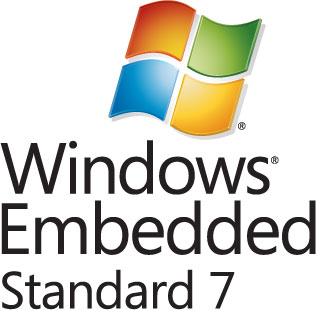REDMOND, Wash. — May 17, 2010
When Robert Smith was looking for simpler ways to digest the information in his textbooks at the Rochester Institute of Technology in New York, he never dreamed he would end up 3,000 miles away in Redmond, Wash., on the cutting edge of embedded technologies at Microsoft.
Now he finds himself on the West Coast as a program manager for Microsoft’s Windows Embedded business, working on the recently released to manufacturing, the Windows 7-based Windows Embedded Standard 7, and assisting developers as they realize their vision from conception to completion. It’s this process that Smith and the Windows Embedded team set out to simplify with Windows Embedded Standard 7.

Windows Embedded Standard 7
Windows Embedded Standard 7 delivers the power, familiarity and reliability of the Windows 7 operating system in a highly customizable and componentized form, enabling original equipment manufacturers (OEMs) developing devices for retail, hospitality, manufacturing and other markets to focus on their core competencies and create product differentiation. The next-generation platform includes many new and interesting Windows 7 features that can be used in embedded scenarios for specialized devices. For example, Windows Aero, Windows Touch and Windows Presentation Foundation enable developers to create rich user experiences. BitLocker and other security upgrades offer improved data protection on media, and shorter boot times improve the response times of active applications to increase performance. Windows Embedded Standard 7 can even help reduce power consumption.
Along with these new features, Windows Embedded Standard 7 also offers a variety of tools to enable OEMs and developers to bring devices to market faster and easier. One of these major upgrades Smith personally helped introduce is the Image Builder Wizard (IBW) tool, a set of wizard pages that developers can leverage to select features and drivers. Dependency resolution then happens automatically and the operating system configuration is built on the embedded device. Depending on the individual experience of a developer, a process that might take 30 minutes to several days can now be completed in a matter of minutes with the IBW tool.
The concept of an “Embedded Core” was also introduced with Windows Embedded Standard 7. This bootable entity contains the most common pieces required for bootable images, and it is automatically included for developers as the base building block of all images. Others are available as well within a distribution share, including feature, driver and language packages, and the resource can be shared among multiple developers to provide them with access to the same source to create images.
In addition, Windows Embedded Standard 7 is enabling OEMs to deliver and service next-generation devices with seamless connection to the world of Windows. With a number of servicing scenarios, OEMs have full control of the servicing of their device and installing new features while it is running in a connected fashion or offline.
Smith has gone from simplifying university subject matter to simplifying development cycles for specialized device developers.
For more information on what’s new in Windows Embedded Standard 7, please view the Windows Embedded Standard 7 Technical Overview white paper and the Windows Embedded Standard 7: Enterprise Tested video.




